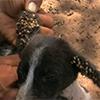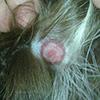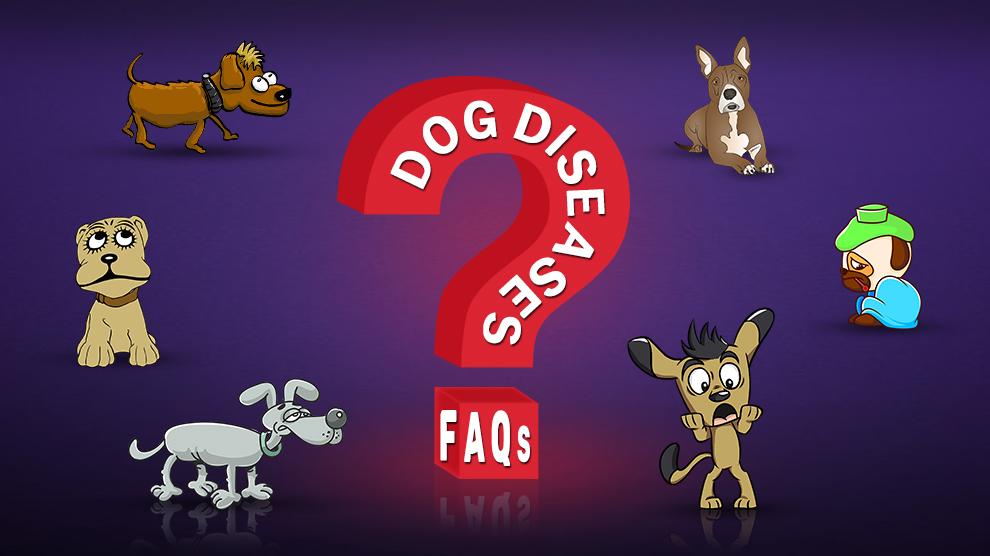What Is Cushings Disease In Dogs?
 Cushing’s disease is referred to as hyperadrenocorticism in which the pituitary gland produces excess cortisol. In some dogs, any problem in the adrenal glands may also cause a rise in cortisol. The major culprit is any form of tumors in both glands.
Cushing’s disease is referred to as hyperadrenocorticism in which the pituitary gland produces excess cortisol. In some dogs, any problem in the adrenal glands may also cause a rise in cortisol. The major culprit is any form of tumors in both glands.
The symptoms are very similar to diabetes which may include:
- Excess thirst
- Increase in appetite
- Increased urination
- Lethargy
- Hair loss
Can Dogs Get Lyme Disease?
 Yes, dogs can get Lyme disease from the bite of ticks that carry a type of bacteria called Borrelia burgdorferi. Symptoms may not show up even until two to six months after the dog’s exposure to the bacteria. Symptoms of Lyme disease include:
Yes, dogs can get Lyme disease from the bite of ticks that carry a type of bacteria called Borrelia burgdorferi. Symptoms may not show up even until two to six months after the dog’s exposure to the bacteria. Symptoms of Lyme disease include:
- Fever
- Lethargy
- Lameness
- Loss Of Appetite
When To Put A Dog Down With Cushing's Disease?
 Older dogs and dogs with Cushing’s disease develop less efficient immune systems that may lead to many additional problems. Your veterinarian can diagnose and treat most of the problems related to this disease.
Older dogs and dogs with Cushing’s disease develop less efficient immune systems that may lead to many additional problems. Your veterinarian can diagnose and treat most of the problems related to this disease.
When your dog develops secondary problems signaled by serious weakness, it is very difficult for your furry friend to cope up with the illness.
You should ask the question: Is my dog so ill that it should be put off? If your dog is in intolerable pain and if there is no cure, you need to put aside your feelings and do your best for your special friend.
However, putting down a dog is an area of controversy and you should discuss this with your veterinarian.
What Are The Final Stages Of Cushing's Disease In Dogs?
 Dogs that suffer from Cushing syndrome or hyperadrenocorticism exhibit signs that may include increased hunger, excess thirst, and urination, hair loss, as well as muscle atrophy. Treatment for the disease depends on the source of the illness.
Dogs that suffer from Cushing syndrome or hyperadrenocorticism exhibit signs that may include increased hunger, excess thirst, and urination, hair loss, as well as muscle atrophy. Treatment for the disease depends on the source of the illness.
As the illness progresses, your dog may develop serious secondary problems like painful skin lesions, potbelly, severe hair loss, and thinning of the skin. Discuss the problem with your veterinarian for further decisions.
What Is Addison's Disease In Dogs?
 Addisons disease or hypoadrenocorticism is an unusual disease related to adrenal glands wherein the cortex or the outer layer of the gland is damaged. This disease is more common in young to middle-aged female dogs.
Addisons disease or hypoadrenocorticism is an unusual disease related to adrenal glands wherein the cortex or the outer layer of the gland is damaged. This disease is more common in young to middle-aged female dogs.
The symptoms include vomiting, diarrhea, excess thirst and urination, intermittent shivering, and sudden weight loss. This disease is not curable completely. However, with appropriate medication and vet care, the majority of dogs can live a normal lifespan.
Do Dog Ticks Carry Lyme Disease?
 Lyme disease is an illness caused by Borrelia bacteria and is carried by ticks whose bite can transmit the disease to dogs and causes acute polyarthritis. This disease can cause fever, heart, kidney, and neurological problems in canines.
Lyme disease is an illness caused by Borrelia bacteria and is carried by ticks whose bite can transmit the disease to dogs and causes acute polyarthritis. This disease can cause fever, heart, kidney, and neurological problems in canines.
Lyme disease is common in North America and Great Britain. A vaccination is available for Lyme disease, but it is not advisable for dogs that don’t live in Lyme-endemic areas and is even not advisable for those that live in such areas.
What Is The Process Of Dog Dying Of Kidney Disease?
 Many older dogs suffer from kidney disease. Try to understand the outcome of the disease and prepare yourself for the worst. Kidney disease ultimately will lead to kidney failure resulting in inefficient filtering of toxins and wastes from blood.
Many older dogs suffer from kidney disease. Try to understand the outcome of the disease and prepare yourself for the worst. Kidney disease ultimately will lead to kidney failure resulting in inefficient filtering of toxins and wastes from blood.
The first stage will be excess thirst and urination.
Next stage is increased fatigue, decreased appetite, and ragged coat texture.
As the disease progresses, your dog may show symptoms of vomiting, diarrhea, and dehydration.
If the disease becomes severe, toxins start to fill up the body resulting in difficulty breathing, anemia, loss of RBC, and the dog will become totally apathetic and feeble.
You can slow down the process by providing him proper care, diet, and medication. You must still accept that an end will come and thank your furry friend for a job well done.
How To Feed A Dog With Vestibular Disease?
 Dogs with vestibular disease feel extremely dizzy and get sloppy feeling of motion sickness. They may lose their appetite and will refuse to eat or drink. Here are a few tips to feed a dog with vestibular disease:
Dogs with vestibular disease feel extremely dizzy and get sloppy feeling of motion sickness. They may lose their appetite and will refuse to eat or drink. Here are a few tips to feed a dog with vestibular disease:
- Keep their food in an elevated place so that they need not drift down while eating or drinking.
- Keep their food and water bowls as close as to the wall and that would prevent them from falling forward.
- You can switch to easily digestible food till recovery.
- Use a harness until they become all right.
- Give them plenty of rest and do not persuade them.
What Does Lyme Disease Look Like On A Dog?
 Ticks are very dangerous as they carry many sicknesses that are fatal. The main danger is deer ticks, which transmit Lyme disease primarily causing arthritis, fever, and neurological symptoms, and has the potential to be fatal if not diagnosed early and treated properly.
Ticks are very dangerous as they carry many sicknesses that are fatal. The main danger is deer ticks, which transmit Lyme disease primarily causing arthritis, fever, and neurological symptoms, and has the potential to be fatal if not diagnosed early and treated properly.
Dogs exhibit joint pain and inactivity in one or more legs. This may involve joint and connective tissue damage and some neurological disorders. Sometimes this may cause extreme soreness around the neck as well as other joints.











